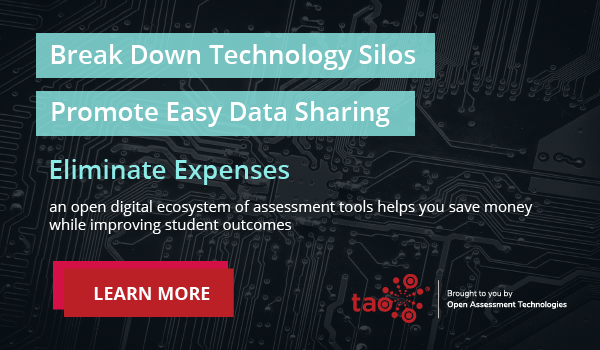As we continue to grapple with the aftermath of the pandemic, K-12 schools are making adjustments to their daily routines to better accommodate students learning and capabilities. Whether it’s a larger focus on equity or a rise in remote learning, schools must adapt to the new ways of helping their students learn to gain a better assessment.
While minuscule changes are different in each district, we can see overarching trends in academic settings across the country. We looked at nationwide trends and findings in the 2022 Future Ed Report to outline trends in K-12 academia for this period.
Measuring Success In New Ways
In years prior, education was siloed to measure students via standard testing scores. While testing to measure education has not gone away, educators are viewing student success as more than just high test scores and accurate coursework.
In San Diego Unified School District, grades are now being based on mastery of course material, growing beyond simply taking in the average class test scores. Grades also cannot be penalized for late assignments or poor classroom behavior; those behaviors will lead toward a citizenship grade rather than an academic one.
This shift away from generalizing classroom success is anything but subtle. It turns attention away from a group and back on the individual, which in turn helps teachers address individual student needs as they arise. Additionally, this separation of “citizenship” and “academic” grading can remove any potential academic discrimination based on poor behavior.
Redesigning Assessments
Historically, most of a student’s grade has come from large formative exams every semester. However, this may in fact be a skewed way of gauging the way a student learns. No two students take in information in the same way, so using the same standardized testing could reflect this.
Similar to San Diego’s initiatives, educators are turning to formative assessments, reports, projects, and portfolios to better assess a student’s skills and achievements. By taking this non-standard approach, it can be easier for educators to identify a student’s strengths and weaknesses with the course material. This once again turns the attention on the individual student, leading to improved performance.
Offering Disability Services
Nearly 7 million students with disabilities in the U.S. make up 14% of national public school enrollment. Disability can come in the form of dyslexia, speech impediment, attention issues, developmental delays or emotional disturbances. As more schools turn to hybrid classrooms or fully online schooling, schools must keep in mind the impacts this will have on students with these disabilities.
Technology can be both a blessing and a curse for students with disabilities. A student with an attention disorder may find it difficult to focus on classwork using a computer, but a student who is visually impaired may find an audiovisual assistant incredibly helpful for consuming content. Once again, schools must be mindful of the individual students they seek to help through technology.
Providing for the needs of disabled students extends outside the classroom as well. In order to ensure that they receive the same level of education as their peers, K-12 schools are required to identify and provide appropriate services for their students with physical, mental, emotional, and behavioral disabilities.
Identifying and Addressing Racial Equity
For years now, there has been a higher pressure put on schools to take racial equity into account when measuring a school’s success. Every institutional decision should be made with equity in mind, as the socioeconomic environment can directly impact a student’s academic experience.
Firstly, districts must work to identify and address equity gaps. Administrators must critically analyze students’ progress in the classroom with the goal of graduation, taking note of any roadblocks or hurdles that each individual child must face. Not only does this mean ensuring that your classrooms are well-staffed with qualified teachers and supplied well, but it also extends to fulfilling a students’ basic needs. Security in food, housing, transportation, technology, and academic and mental health support is key in giving students a comfortable environment to blossom and learn.
Secondly, educators should take a critical look at their lesson plans to see where improvements can be made. For example, studying material from voices that have been historically underrepresented or absent from the classroom can encourage new avenues of curiosity for students to explore. Alternatively, giving students authentic opportunities to have their own voices heard can promote civic engagement and encourage them to reflect on how their own experiences can shape the world.
These equitable changes should be addressed both on a large scale district level and on a smaller classroom scale.
Shifting to Hybrid Learning
The shutdowns from the pandemic have caused a global scale reexamination of the way educators spend time with their students. Virtual learning continues to stay on the rise. However, switching from an in-school classroom to a virtual at-home environment doesn’t always go smoothly.
Educators need to ensure that their students are actually able to access the digital lessons that are provided. This can be done in part by providing students with computers that allow them to join into classroom lessons, but there is another component to this: WiFi. If a wireless connection is not guaranteed in a student’s home, then schools need to be proactive in steps to ensure that those students are still able to join in lessons.
—-
Does your school need to rethink the way you evaluate a student’s understanding of course material? TAO Testing offers innovative online testing systems that enable instructors and empower students to succeed remotely or in person. These solutions seamlessly integrate with your existing toolset to unify your operations and keep you connected, while giving you the freedom to evolve with your students’ needs. Contact us today to get started on helping your students advance.

